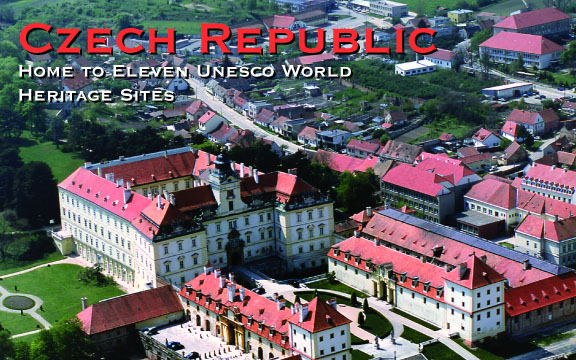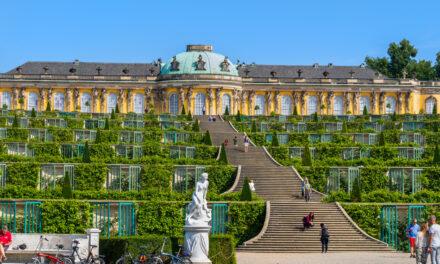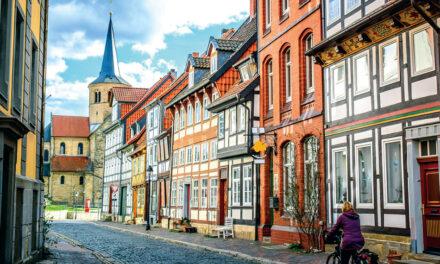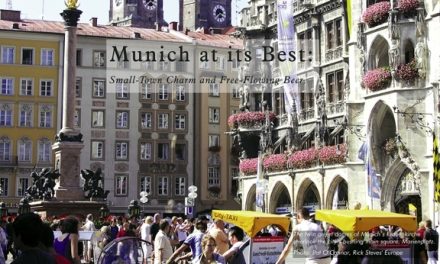Czech Republic
Home to Eleven Unesco World Heritage Sites
Published in the July-August, 2004 Issue of Canadian World Traveller
Text and Photos Courtesy of Czech Tourist Authority – Czech Tourism www.czechtourism.com
In 1972, UNESCO adopted the Convention Concerning the Protection of the World Cultural and Natural Heritage. The purpose of this international agreement is to select and protect cultural monuments and natural areas that have outstanding universal value and should be protected in the future for all people.
At present, there are 730 cultural and natural sites situated around the globe that are to be found on the World Heritage List. The people of the Czech Republic are proud that eleven of these honored sites are found in their country.
Living History
If you are looking for a place in Europe where ancient, well-established traditions, history and a millennium-old culture blend with the dynamic pace and the conveniences of modern life, then the Czech Republic is definitely the right destination. Visited by millions of tourists every year, including an increasing number of Canadians, the Republic is now an attractive venue for all sorts of international business, cultural and sports events.
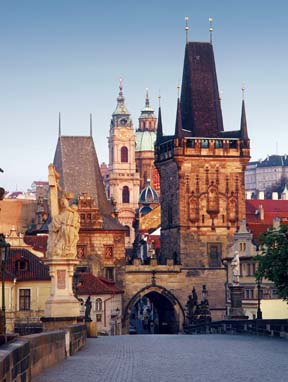 Prague
Prague
The Czech capital’s historical center, more than ten centuries old, enchants its residents and visitors alike through its unique symbiosis of architectural styles – from its Romanesque rotundas, Gothic towers, and Renaissance burghers’ houses and palaces to its Jewish synagogues, Baroque churches, convents and monasteries.
The center of this city of a hundred spires is the befitting jewel in the Czech Republic enviable crown of eleven UNESCO World Heritage Sites.
Zdar nad Sazavou
The abbot of the Zdar monastery had the John of Nepomuk Pilgrimage Church built to celebrate the memory of the Czech martyr and saint.
It is a unique testament to the genius of the Prague architect Giovanni Blasius Santini, who decided to use the five-pointed star as the principal symbol in his remarkable structure. Elements of both Baroque and Gothic architecture are united to create the splendid Bohemian Gothic Baroque. Zdar nad Sazavou is located some 120 km from Prague.
Kromeriz
In 1777, this town, located in Central Moravia at the foot of the Chriby hills, became the seat of the bishops of Olomouc. The splendid Kromeriz chateau and its beautiful garden are considered an especially attractive and well-preserved example of Baroque palatial and garden design. The chateau itself, its Flower Garden and the Garden Below the Chateau were entered in the UNESCO list of world cultural heritage sites. Kromeriz is located southeast of Prague about 50 km from Brno.
Kutna Hora
During the Middle Ages, profits from the Kutna Hora silver mines brought fame to the lands of the Czech Crown, and Kutna Hora became the richest and most powerful town in the Czech lands. At the turn of the 14th and 15th centuries, Kutna Hora became the seat of King Vaclav IV. The Gothic St. James’ Church (1330) and the St. Barbara’s Cathedral (1388), devoted to the patroness of miners, are among the most important architectural monuments. Kutna Hora is situated 60 km east of Prague.
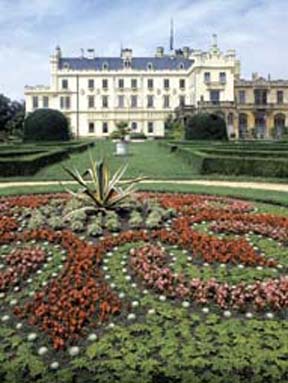 Lednice-Valtice Area
Lednice-Valtice Area
An extensive Baroque complex built for the Liechtenstein family by renowned architects like C. Tencalla, D. Martinelli, J. B. Fischer von Erlach, and J. Ospel. The area is spread between the little towns of Lednice and Valtice southeast of Brno, and covers 250 square kilometers.
The complex consists of various chateau buildings, garden structures and decorative sculpture of various styles, set amidst ponds and woods. The Lednice-Valtice area is located southeast of Prague, near the Austrian border.
Cesky Krumlov
This picturesque town lies in a deep, meandering valley of the Vltava river in the very South of Bohemia. Its golden age came about during the rule of the Lords of Rozmberk (1302-1602), who made their residence there.
At that time, Krumlov was a point of contact between the Czech interior, the Austrian/German Danube region, and Northern Italy. The Italian Renaissance greatly influenced the appearance of the town and its castle. Cesky Krumlov is situated some 180 km due south of Prague, near the border with Austria.
Holasovice
This South-Bohemian village from the 13th century is considered a true pearl of the rustic Baroque style. Its 22 farmhouses with painted Baroque gables in the front and gardens in the rear are situated around a central pond. The pond was used for breeding freshwater fish; the entire area is still known for its fish industry. The village is a living monument to rural Czech traditions. Holasovice is situated near Cesky Krumlov due south of Prague near Cesky Krumlov.
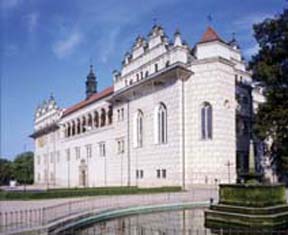 Litomysl
Litomysl
In the small town of Litomysl, the aristocratic family of Pernstejn had a mediaeval castle remodeled into a Renaissance chateau the second half of the 16th century.
The chateau is an exceptional example of an original Italian arcaded structure which was adapted for the Czech environment. It is a fine illustration of an aristocratic residence built during mediaeval Renaissance, with later developments under the influence of new styles. The town and chateau are located due east of Prague.
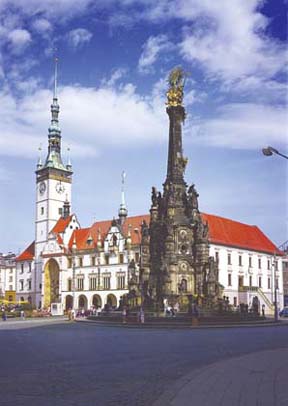
Olomouc
The Holy Trinity Column came into existence between 1716 and 1754 and is a testament to the onetime religious fervor of this bishopric town. The column unites the motif of ecclesiastic triumphalism and faith with its architectural and artistic expression.
Thanks to the entry of this Baroque column on the prestigious UNESCO list, the historic Moravian town of Olomouc has also received wide recognition.
Olomouc used to be Moravia’s capital. Its most important religious structure is the St. Wenceslas’ Cathedral originally constructed in 1109. Olomouc is situated 300 km east of Prague.
Telc
Originally a royal water-keep founded in the 13th century on the crossroads of several busy trade routes, Telc obtained its current appearance in the 16th century, when the chateau and the town center were rebuilt. This development was in part the work of the Jesuit order, which then had a significant presence in the town.
Beside the chateau and its park, the town’s most important monument is its square – a unique complex of Renaissance and Baroque houses. Telc is located southeast of Prague on the highway to Vienna.
Villa Tugendhat
The Villa Tugendhat in Brno – Cerna Pole is the very first monument of modern architecture in the Czech Republic and only the fourth worldwide which has received the prestigious UNESCO designation.
The building is named after Fritz Tugendhat, owner of a Brno textile factory, who had this jewel of inter-wars functionalist architecture built for his family. The glass-fronted villa set on a grassy slope was designed by famous German architect Ludwig Mies van der Rohe in 1928.
This article is Part 2 of a two-part series on the Czech Republic.
For More Info:
Czech Tourist Authority – Czech Tourism
401 Bay Street, Suite 1510
Toronto, ON M5H 2Y4
Tel.: (416) 363-9928
Fax: (416) 363-0239
E-mail: info-ca@czechtourism.com
www.czechtourism.com
Embassy of the Czech Republic
251 Cooper Street
Ottawa, ON K2P0G2,
Tel.: 613-562-3875
Fax: 613-562-3878
Email: ottawa@embassy.mzv.cz
www.czechembassy.org
CSA Czech Airlines
2020, rue University, Bureau 2210
Montréal, QC H3A 2A5
Tel.: (514) 844-4200
E-mail: ymg@czechairlines.com
www.czechairlines.com

